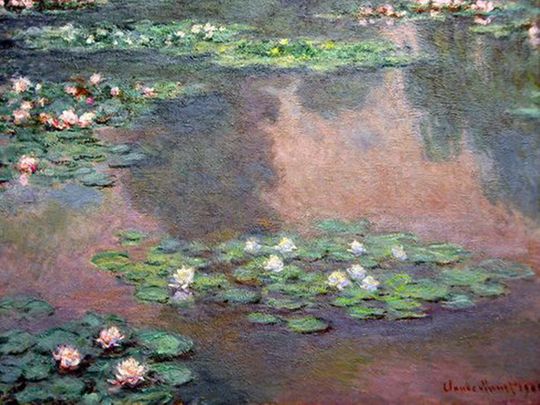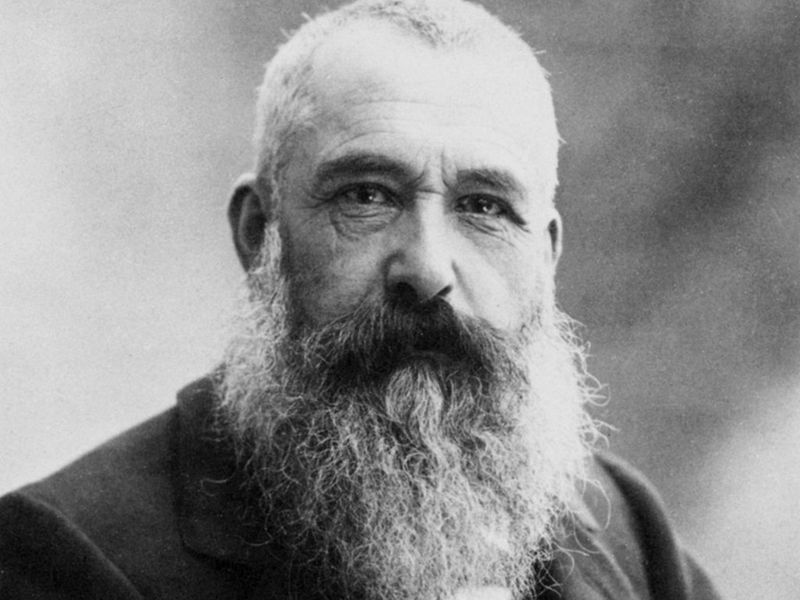
Water lilies, serene landscapes, pastel colours reflecting changing light… French impressionist painter Claude Monet’s paintings have been loved for decades. But he would never have become the iconic artist that he is, without standing up for his passion.
Click start to play today’s Crossword and spot Monet’s painting in one of the clues.
Here are a few facts about the French painter to help you get to know him and his work better:
1. He had an early start
Money began drawing as a young boy in Paris, in the mid-1800s, and would often sketch his friends and neighbours. As a teen, he even sold charcoal caricatures of local figures. Monet learned how to use oil paints and the technique of en plein air (outdoor) painting, which later became his hallmark style. While Monet’s mother encouraged his art, his father, a grocery store owner, wanted him to join the family business and focus on learning how to stock and order products.
2. He never abandoned art
In 1861, Monet was drafted into the army, and left Paris for Algeria. Monet’s mother had died several years prior, but his father, who was still alive, offered to pay for his son’s discharge from the army if Monet promised to give up painting. But Monet refused. In the first year of his seven-year military commitment, Monet got sick with typhoid – his aunt, with whom he was very close, paid to get him released, and once he was home, she enrolled him in art school in Paris.
3. Disillusionment was an issue
The late 1920s saw Monet as a young artist, disillusioned with the Academie, France’s art establishment. Monet hated sticking to one style of art, but unfortunately, the Academie was known for promoting formulaic artwork: the kind of paintings hung in the Louvre, with subjects related to Greek and Roman mythology. Depressed and struggling to make ends meet, Monet jumped off a bridge over the Seine in 1868. He survived his fall, and soon began spending time with other artists, who shared his disillusionment.

4. A new beginning
Monet moved in an inspirational circle – his friends were other frustrated artists who later became incredibly famous: Renoir, Edgar Degas, and Paul Cezanne to name a few. The group called itself The Anonymous Society of Painters, Sculptors, Printmakers etc., and organised an exhibition in 1874. The exhibition was considered groundbreaking for its new forms of art, featuring bold, vivid colours, and spontaneous brushwork. A critic at the show compared Monet’s painting, ‘Impression, Sunrise’, to an incomplete sketch or ‘impression’. Historians think that’s the origin of the term Impressionism, which became the unique style used to describe the artists’ radically different paintings.
5. Imported water lilies
From 1883 until his death in 1926, Monet lived in Giverny, northern France. During those years, he hired gardeners to plant a variety of flowers and trees in his garden, from poppies to apple trees, turning it into a sanctuary that became the perfect setting for his artwork. Since Monet became quite wealthy from the sales of his paintings during his lifetime, he invested a great deal in his garden. He installed a Japanese footbridge across his pond, which features in much of his work, and he imported water lilies from Egypt and South America. Although local city council officials told him to remove the foreign plants so they did not poison the water, he refused. Monet’s water lilies became iconic aspects of his work over the next 25 years. He even hired six full-time employees to take care of them. One gardener would take a boat into the pond every morning to wash or dust each lily pad. Only once they were clean would Monet begin painting them!
What do you think of Monet’s dedication to art? Play today’s Crossword and tell us at games@gulfnews.com.





